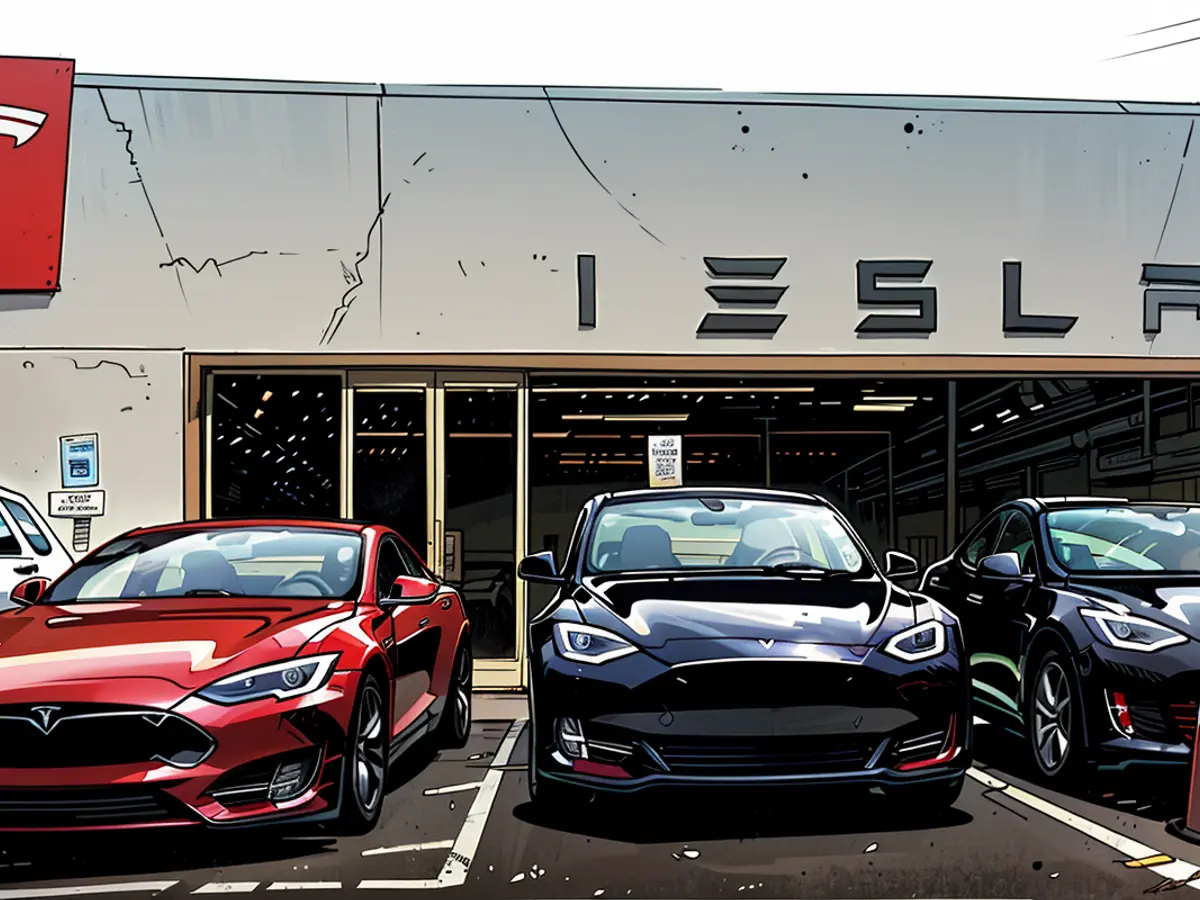Tesla sets in a lull in inquiries
The times when customers stood in lines at Tesla are over. The competition has become stronger, Tesla's electric vehicles no longer sell themselves. This is reflected in the balance sheet.
The price war in China and the weaker demand for electric vehicles in the USA and Europe leave traces in Tesla's balance sheet of the US electric vehicle manufacturer. The operating income decreased by about a fifth to 3.674 billion Dollars, as the company announced after the stock exchange closing in the USA. The revenue in the automotive business decreased by seven percent to 19.9 billion Dollars, which is seven percent less than before the end of the year.
Overall, Tesla generated revenues of 25.5 billion Dollars and thus slightly more than the previous year. The growing energy business, to which, among other things, home battery storage systems belong, contributed to this. Here, revenues doubled to three billion Euro.
In the aftermarket trading, Tesla shares fell by four percent. The electric vehicle manufacturer had not only been affected by price cuts due to the weak demand for its vehicles, but also offered unfavorable credit conditions to car buyers. Analysts assume that the costs for discount campaigns will be distributed over the next quarters.
However, an end to the demand slump is slowly coming into sight. Tesla announced a gradually increasing production in the third quarter. In the second quarter, the automaker delivered only slightly more than 444,000 vehicles, five percent less than in the comparison period. Analysts had expected an even larger decline. In the entire previous year, Tesla sold around 1.8 million cars, concrete forecasts for the current year are not yet available.
The decline in demand for electric vehicles, including Tesla's models, has led to a reevaluation of quarterly numbers in the industry. Despite a decrease in operating income and revenue in the automotive sector, Tesla's energy business, including home battery storage systems, showed a significant boost, doubling its revenues.
In response to the weaker demand and price competition, Tesla Motors has adapted its strategy, offering unfavorable credit conditions to stimulate sales, with the expectation of spreading these costs over subsequent quarters.








